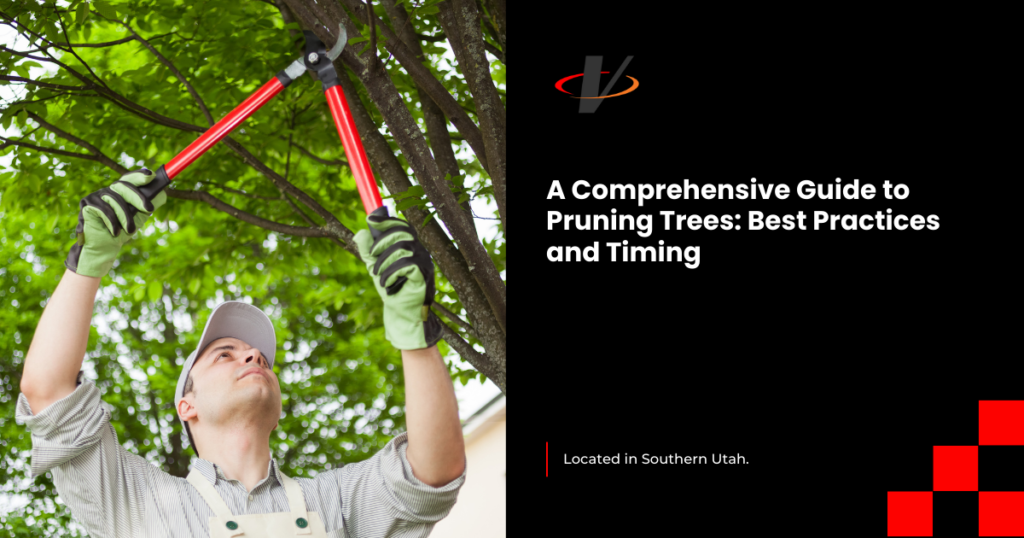
A Comprehensive Guide to Pruning Trees: Best Practices and Timing
Pruning is essential for maintaining the health and appearance of your trees. As a homeowner, understanding the best practices and timing for pruning can make a significant difference in the longevity and vitality of your trees. In this guide, we’ll explore the key aspects of pruning, including when and how to do it effectively.
Why Prune Your Trees?
Pruning is not just about keeping your trees looking neat and tidy. It offers several important benefits:
Health: Removing dead or diseased branches prevents the spread of disease and promotes healthier growth.
Safety: Pruning reduces the risk of falling branches, which can pose a danger to people and property.
Aesthetics: Well-pruned trees look more attractive and can enhance the overall landscape of your yard.
Growth Management: Proper pruning directs the growth of the tree, ensuring it develops a strong structure and desired shape.
When is the Best Time to Prune?
The timing of pruning can significantly impact the health of your trees. Here’s a seasonal guide to help you determine the best time for pruning:
Late Winter to Early Spring (Dormant Season):
Most trees are best pruned during their dormant season. Pruning in late winter to early spring before new growth begins minimizes stress on the tree and reduces the risk of pest infestation.
Trees like oak, maple, and fruit trees benefit greatly from dormant season pruning as it helps promote vigorous spring growth.
Summer:
Light pruning and the removal of dead or damaged branches can be done during summer.
Pruning during summer can also help manage the size of fast-growing trees, preventing them from becoming too large.
Fall:
It is generally advised to avoid heavy pruning in the fall. Pruning cuts heal more slowly in the cooler temperatures, making trees more susceptible to disease.
How to Prune Your Trees: A Step-by-Step Guide
Assess Your Tree:
Before making any cuts, thoroughly inspect your tree. Identify branches that are dead, diseased, damaged, or growing inwards.
Use the Right Tools:
Ensure your pruning tools are sharp and clean. For small branches, use hand pruners or loppers. For larger branches, a pruning saw is more appropriate.
Make Clean Cuts:
When removing a branch, make clean cuts just outside the branch collar (the swollen area where the branch joins the trunk). Avoid leaving stubs, as they can attract pests and diseases.
Follow the 3-Cut Method for Large Branches:
For branches thicker than 1 inch, use the 3-cut method to prevent bark tearing:
Make a small cut on the underside of the branch, a few inches away from the trunk.
Make a second cut on the top of the branch, further out from the first cut, allowing the branch to fall safely.
Remove the remaining stub by cutting just outside the branch collar.
Prune for Structure:
Remove crossing branches and those that grow towards the center of the tree to promote a strong structure and good air circulation.
Step Back and Review:
Periodically step back and assess your work to ensure the tree maintains a balanced and natural appearance.
Conclusion
Proper pruning is vital for the health and aesthetics of your trees. By understanding the best practices and timing for pruning, you can ensure your trees thrive and contribute to the beauty of your landscape. For more detailed information on pruning techniques, you can refer to resources from reputable horticultural organizations and extension services.
References
The Arbor Day Foundation – Tree Pruning Guide (https://www.arborday.org/trees/tips/tree-pruning.cfm)
University of Minnesota Extension – Pruning Trees and Shrubs (https://extension.umn.edu/planting-and-growing-guides/pruning-trees-and-shrubs)
Royal Horticultural Society – Pruning and Training (https://www.rhs.org.uk/advice/profile?PID=153)
By following these guidelines, you can master the art of pruning and keep your trees healthy and vibrant for years to come.
